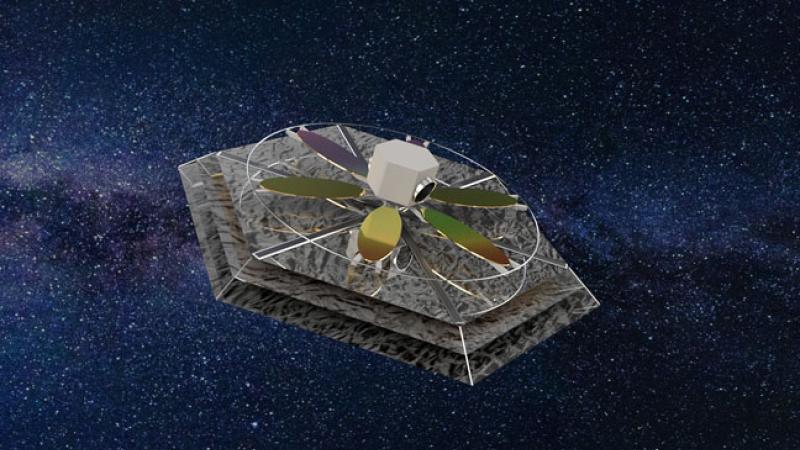New technology may enable exoplanet discoveries previously thought impossible
January 26, 2023

Are there other Earth-like planets? Is there extraterrestrial life? In the quest to find planets that orbit stars other than the sun, “Earth 2.0” is the Holy Grail. Earth 2.0 is a planet similar enough to Earth to enable the existence of life as we know it. It would be the right temperature for liquid water, and it would orbit a star with a steady supply of light. Ideally, it would be close enough that we could imagine going there or at least sending a probe to explore it.
Rensselaer Polytechnic Institute researchers are leading a team in pursuit of an idea that could make it possible to find nearby, habitable, Earth-like planets – or prove that they are unlikely to exist – thanks to a new grant from NASA.
Heidi Jo Newberg, professor of physics, applied physics, and astronomy at Rensselaer, has been named a NASA Innovative Advanced Concepts (NIAC) Program Fellow. As such, she will join a prestigious group of innovative scientists whose visionary ideas have included new types of space propulsion systems, robots that are modeled after nature such as spiderbots, and technology that makes it easier for humans to live in space.
Newberg and her doctoral student Leaf Swordy will collaborate with Thomas D. Ditto, inventor of the “Dittoscope,” the telescope concept that is the inspiration for this new design; Shawn Domagal-Goldman and Richard K. Barry, astronomers at NASA Goddard Space Flight Center; L. Drake Deming, astronomer at University of Maryland, College Park; and Frank Ravizza, optical engineer at Lawrence Livermore National Laboratory.
With funding from the fellowship, the team will determine if their idea for a Diffractive Interfero Coronagraph Exoplanet Resolver (DICER) is feasible. Using conventional telescopes, it would take a 20-meter infrared telescope in space to see a planet like the Earth orbiting a star like the sun. That is three times the diameter of the state-of-the-art James Webb Space Telescope, and is considered beyond the reach of current technology. With DICER, light from a faint planet is collected by two 10-meter diffraction gratings, which are easier to pack up in a rocket to shoot into space.
“Telescopes have not changed in their basic designs using mirrors and lenses in four centuries,” Ditto said. “DICER uses a diffraction grating primary objective and that changes everything.”
DICER is designed to find all habitable zone planets closer than 10 parsecs, or 192 trillion miles. In the “habitable zone,” the temperature is right for liquid water. To determine whether conditions are right for life or whether it has already started to develop, scientists look at the air that surrounds the planet. DICER may even be able to detect if the newly discovered exoplanets have atmospheric ozone, a so-called biomarker, that may indicate the existence of life as we know it.
“Nobody really knows,” Newberg says. “We could find zero or we could find 100 habitable exoplanets. But the discovery of even one oxygen-rich, terrestrial exoplanet in the local neighborhood of our own sun would be among the most publicly engaging astronomical results of all time!”
The DICER technology is also scalable, so the potential exists to find exoplanets that are fainter or farther away in the future.
“One of the important things about the DICER design is that it will detect planets that orbit other stars in any orientation,” says Deming. “So far, most exoplanets have been found because they pass in front of their host star and block some of its light, but DICER could find exoplanets that orbit in any orientation.”
“Right now, as far as we can tell, we are alone in the universe,” says Barry. “As of yet, we have no scientifically compelling evidence of life off-planet. This will change in the very near future with the development of new technologies such as DICER.”
“The profound implications of the DICER project have placed Professor Newberg in a position to tap into one of humanity’s deepest questions: Are we alone?” said Dr. Curt M. Breneman, Dean of the Rensselaer School of Science. “I look forward to hearing about the results of this study.”